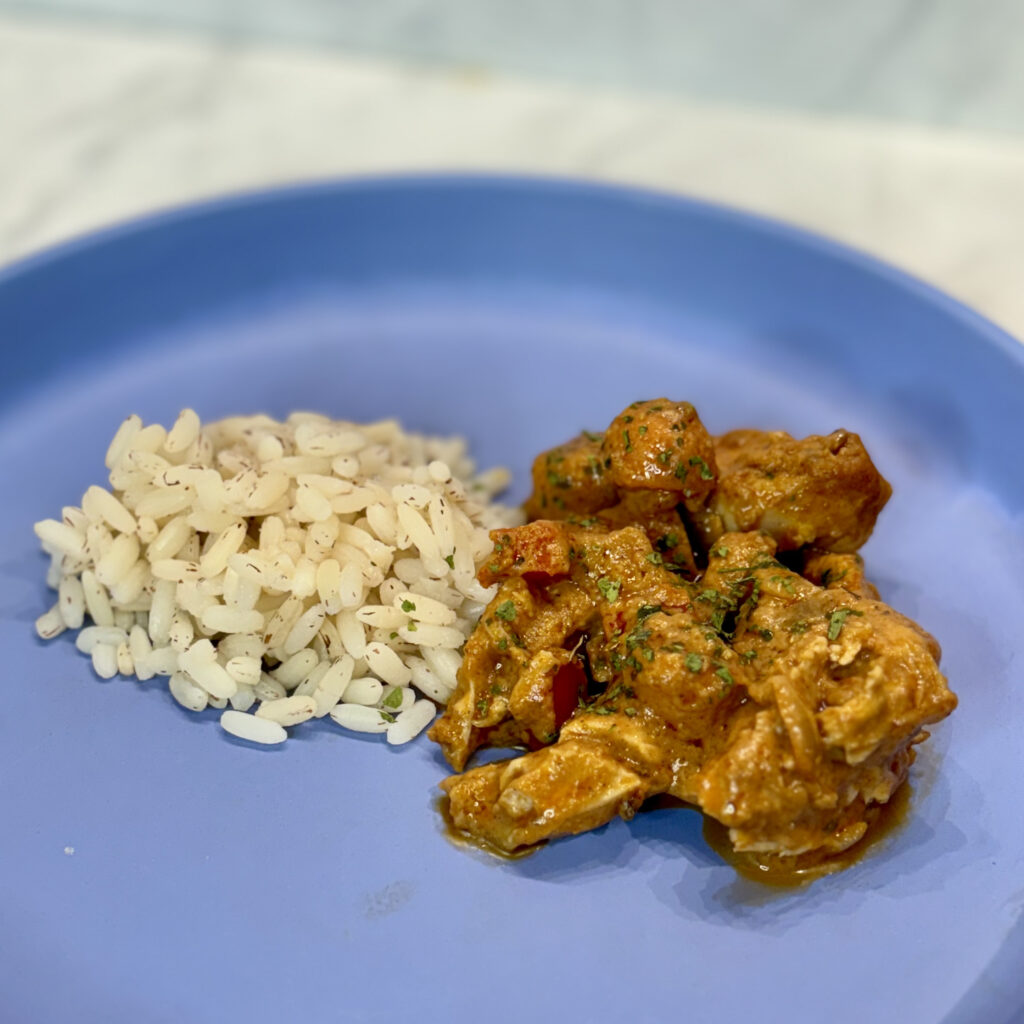

Peanut (or peanut butter) stews are a staple in western Africa, where they go by the names domoda and maafe. Here, we’ve toddlerized the dish to leverage your young child’s affinity for nut butter while maintaining the dish’s foundational flavor profile—the better to push them to try a more layered, multi-ingredient food that’s also familiar in flavor. Never cooked–or eaten–African food? Have no fear: the process and technique used to make peanut butter stew is no different than that of any other stew or curry. We’ve also provided directions for how to cook the components separately and together, allowing you to decide what your child is ready for, and when. Get ready for excitement either way: it’s peanut butter (stew) for dinner! (And vegetables and protein, too, not to worry.)
If serving a full-on stew, place the mixture on top of or besides a small mound of rice or couscous. If serving the components individually, spread pieces of chicken, carrot, and sweet potato on a plate, then either top with dabs of the stew sauce or serve the sauce as a dip by pouring a small pond of it next to the other ingredients; serve with rice.
Lamb or beef chunks can substitute for chicken; hard-boiled egg pieces is also a popular protein choice in Senegalese and Gambian versions of this dish and can be used--along with vegetable stock instead of chicken broth--to keep it vegetarian (though don’t cook the eggs with the stew). Any nut butter can be used here, too, and additional green (i.e., spinach, kale) or starchier gourd (i.e., pumpkin, squash) vegetables can be added to the pot at the start of the simmering process.